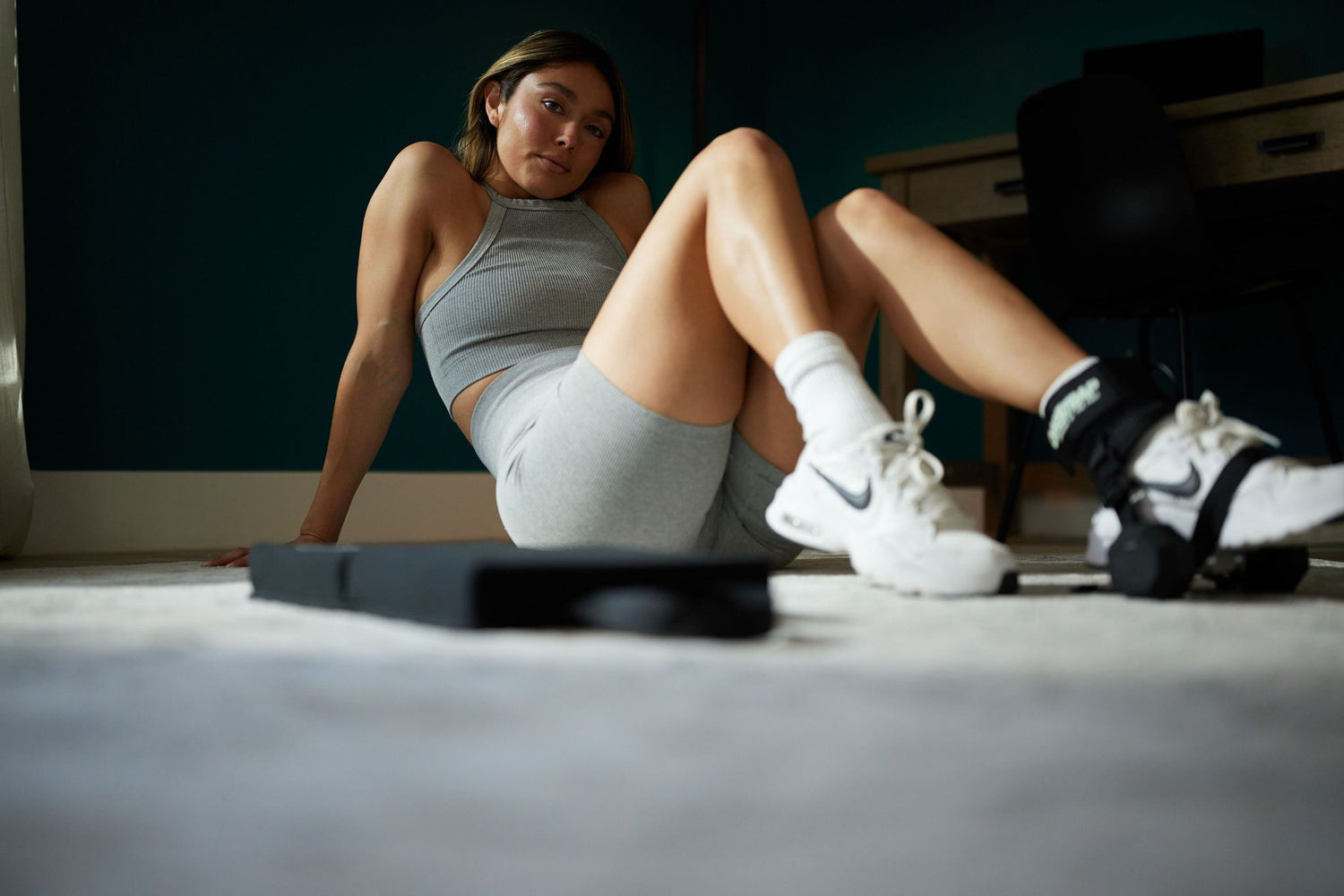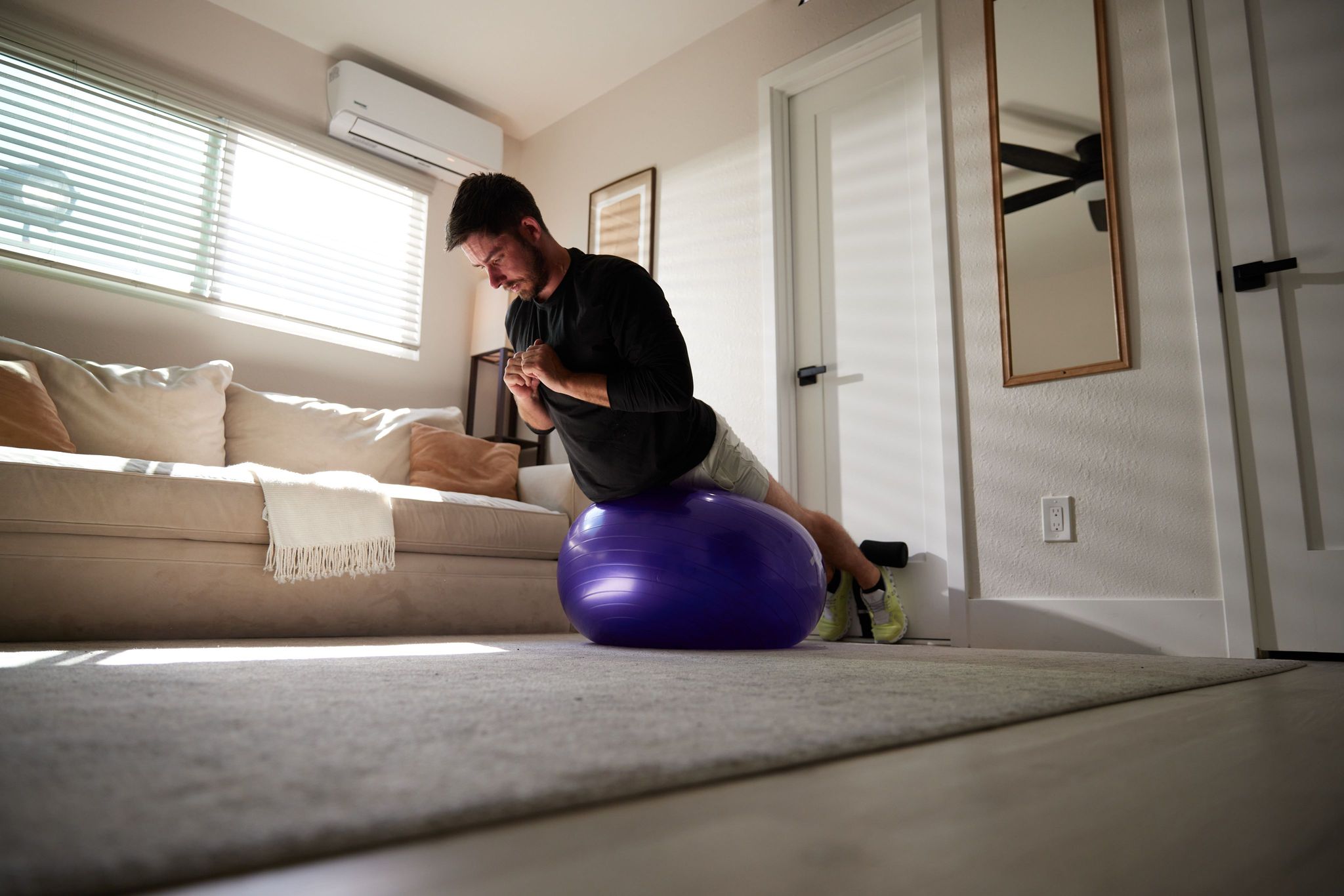Knee pain is a common issue that affects people of various ages, often hindering daily activities and overall mobility. Whether you're recovering from an injury, dealing with arthritis, or simply looking to prevent knee pain, incorporating specific exercises into your routine can significantly help.
Key Takeaways
- Ease knee pain with targeted exercises: These physical therapist-recommended movements focus on strengthening the muscles around the knee to provide pain relief and support.
- Simple, effective at-home routine: You can perform these exercises with minimal equipment, making them easy to incorporate into your daily routine from the comfort of your home.
- Improve stability and mobility: Strengthening the surrounding muscles not only reduces knee pain but also enhances joint stability and flexibility for better movement and injury prevention.
Understanding Knee Pain
Root Causes of Knee Discomfort
Knee discomfort can arise from various factors, affecting people differently.
Common causes include injuries such as ligament tears or meniscus damage, which are often seen in athletes.
Aging is another factor, as it naturally leads to wear and tear of the knee joint, potentially resulting in conditions like osteoarthritis.
Overuse from repetitive motions or high-impact activities can also contribute to strained or inflamed muscles and tendons around the knee.
Poor posture and improper exercise form can exacerbate knee pain by placing undue stress on the joint.
Understanding these root causes is crucial for effective knee pain management. It allows you to tailor exercises and lifestyle changes to address specific issues. By identifying and addressing the underlying causes, you can take proactive steps to alleviate pain and maintain healthy knee function, ultimately improving your overall quality of life.
Impact of Untreated Knee Pain
Untreated knee pain can significantly affect your daily life in various ways. Over time, persistent discomfort may lead to reduced mobility, making simple tasks like walking, climbing stairs, or even sitting and standing difficult.
This limitation can, in turn, decrease your physical activity levels, potentially leading to weight gain and its associated health issues. Moreover, ignoring knee pain can result in further damage to the knee joint, possibly escalating to chronic conditions such as osteoarthritis.
This progression can increase the risk of falls and injuries, particularly in older adults. Additionally, chronic pain can contribute to mental health challenges, including stress and anxiety, as it limits your ability to engage in activities you enjoy. Addressing knee pain early with appropriate interventions, such as knee pain exercises and lifestyle modifications, is essential to prevent these negative impacts and maintain an active, healthy lifestyle.
Physical therapists often recommend exercises that strengthen the muscles surrounding the knee to provide better support and reduce stress on the knee joint. It's important to consult with a healthcare professional or physical therapist before beginning any new exercise regimen, especially for individuals experiencing knee pain or recovering from an injury.
Here's a guide to seven knee-strengthening exercises you can easily do at home to help manage and reduce knee pain.
1. Straight Leg Extension with OmniStrap
How to Do It: Sit in a chair with your leg bent and feet flat on the floor. Attach the OmniStrap to one foot and secure a dumbbell for added resistance. Slowly raise your foot until you have your leg straight in front of you, and hold for a few seconds before lowering it back down. Do it with your left leg and alternate with the right.
Benefits: This exercise strengthens the quadriceps, the front thigh muscles that are crucial for knee stability. Strong quadriceps can help take the load off the knee joint during daily activities, reducing knee pain.
2. Hamstring Curl with OmniStrap
How to Do It: Stand up and wrap the OmniStrap around one foot with a dumbbell for resistance. Hold onto a chair for balance, bend your knee, and lift the heel towards your buttocks. Slowly lower your foot back to the starting position and repeat. Do it with your left leg, and alternate with the right.
Benefits: Hamstring curls target the back of the thigh and are essential for balanced strength in the legs. Strengthening the hamstrings relieves pressure on the knee joint and helps reduce knee pain by ensuring that the leg muscles work together effectively.
3. Air Squat
How to Do It: Stand with your feet shoulder-width apart. Bend your knees and lower your body as if sitting back into a chair, keeping your back straight and knees behind your toes. Go as low as comfortable without causing pain, then push back up to the starting position.
Benefits: Air squats engage the entire lower body, including the thighs, hips, and buttocks. This exercise enhances joint stability and increases leg strength, both of which are vital for reducing knee pain.
4. Prone Hamstring Muscles Curls with OmniBands
How to Do It: Lie face down on the floor, placing bands around your heels. Slowly bend your knees to pull your heels towards your buttocks, ensuring one leg is bent while the other leg remains straight, then gradually lower them back to the ground.
Benefits: Prone hamstring curls intensively work the hamstring muscles, complementing the quadriceps' function and offering enhanced support and cushioning for the knee joint.
5. TKEs (Terminal Knee Extensions) with OmniBands
How to Do It: Place the OmniBands behind your knee and step back to create tension. With a slight bend in the knee, perform a small squat, then focus on straightening the knee and tightening the quadriceps.
Benefits: TKEs are excellent for isolating and strengthening the quadriceps without heavy loads. This exercise helps in maintaining proper alignment of the knee cap, reducing the risk of pain.
6. Hip Thrust with the Nordstick and Yoga Ball
How to Do It: Place the Nordstick behind your heels and position your upper back on a yoga ball. Press through your heels to lift your hips towards the ceiling, creating a straight line from the shoulders to the knees, then lower back down.
Benefits: Hip thrusts strengthen the glutes and hamstrings, which play significant roles in supporting the knee structure. Strong glutes ensure better alignment and distribution of forces through the leg, helping to alleviate knee pain.
7. Nordic Curl with Eccentric Focus to Target
How to Do It: Kneel and secure your feet with the Nordstick. Place a cushion under your knees for comfort. Slowly lower your body towards the ground, focusing on a controlled descent. Use support bands if needed to manage the descent without strain. To further target the hamstring muscles and provide additional support for the knee, consider incorporating variations like the 'straight leg raises' into your routine.
Benefits: This exercise primarily targets the hamstring muscles through eccentric strengthening, which is crucial for decelerating the body during movements and reducing the load on the knee joint.
Effective Stretching Routines
Incorporating effective stretching routines into your daily regimen can significantly alleviate knee pain and improve flexibility.
Start with the hamstring stretch: lie on your back with one leg straight and the other leg bent. Slowly raise the straight leg toward the ceiling, feeling the stretch in your hamstring. Hold for 20-30 seconds, then switch legs.
Another beneficial stretch is the quadriceps stretch. Stand with one hand on a wall for balance, bend one knee, and bring your heel toward your buttocks, holding your ankle with your hand. Feel the stretch in your thigh, hold for 20-30 seconds, and switch legs.
These stretches target tight muscles around the knee joint, helping to improve range of motion and reduce pain. Consistency is key; perform these stretches daily to maintain flexibility and prevent injury. Always stretch gently to avoid overextending and causing more harm.
Managing Knee Pain Through Knee Strengthening Exercises
Incorporating these exercises into your daily routine can make a significant difference in managing and reducing knee pain. It's important to perform these exercises consistently and with the correct form to gain maximum benefits and avoid further injury. Always ensure to warm up properly before starting your routine and to stop immediately if you experience sharp or increasing pain.
For those looking to expand on these exercises, many healthcare professionals recommend personalized exercise programs tailored to individual needs. You can find more in-depth routines and guidance through resources like the "Knee Strength Revolution" program, which provides comprehensive knee pain management strategies and an entire workout program to help bulletproof your knees.
DOWNLOAD THE FREE KNEE STRENGTH REVOLUTION PROGRAM TODAY
By strengthening the muscles around your knees and enhancing your overall leg strength, you not only reduce the impact of knee pain but also improve your mobility and quality of life. Start slowly, listen to your body, and gradually increase the intensity of your workouts as your strength and resilience grow. With dedication and the right approach, you can achieve significant relief from knee pain and get back to enjoying your daily activities pain-free.










































Leave a comment
This site is protected by hCaptcha and the hCaptcha Privacy Policy and Terms of Service apply.